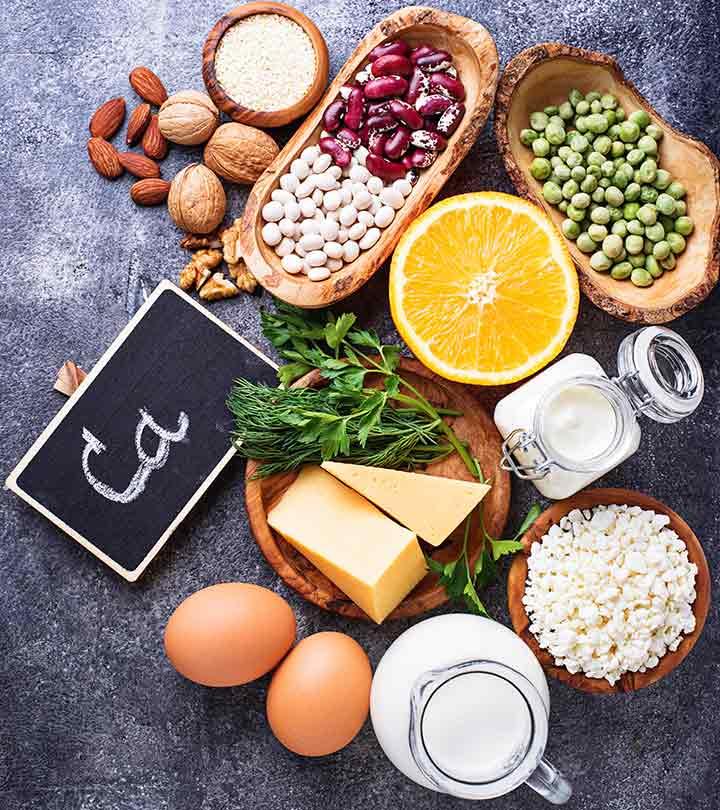Adolescent Nutrition - Top Nutrients
Key Nutrients for Adolescent Girls

Eating healthy is an important stepping stone for all stages of life, but for a growing teenager, getting the right nutrients is very essential. Adolescence is a nutritionally vulnerable phase as rapid physical growth creates an increased demand for energy and nutrients.
Inadequate nutritional intake during adolescence will have serious consequences that may affect long term health.
According to the National Family Health Survey (2015-2016), 45% of girls aged 15–18 are underweight, and about a quarter (27 %) of women aged 20–24 were married before the age of 18.(https://bmcpublichealth.biomedcentral.com/articles/10.1186/s12889-019-7053-1)
Undernourished girls are more prone to stunting (retarded physical growth), diminished intellectual capacity and delayed sexual maturation.
Poor nutrition among adolescent girls leads to iron deficiency which is an underlying factor in more than 60% of all anaemia cases. According to the Comprehensive National Nutrition Survey (CNNS) 2016-18, the prevalence rate for anaemia is 40 % among adolescent girls as compared to 18 % among boys. (https://nhm.gov.in/WriteReadData/l892s/1405796031571201348.pdf)
Anaemia may impair the immune system which exposes this vulnerable group to infections and consequent poor health. (https://www.ncbi.nlm.nih.gov/pmc/articles/PMC4776831/)
Another serious issue is adolescent pregnancies which puts a burden on the young developing mother to provide the nutritional needs for both the foetus and her own requirements. This puts the mother and child at greater risk for anaemia, mortality, stillbirths, impaired foetal growth and low birth weight of the child born.
Insufficient calcium intake during adolescence lowers the bone density and an increased risk for osteoporosis later in life.
Being overweight/obese as an adolescent is associated with immediate and long term risks including diabetes, hypertension, adult obesity and heart disease.
Concern about physical appearance causes eating disorders like anorexia nervosa in adolescent girls where they tend to starve themselves or do not eat enough calories, which puts them at risk of anaemia, poor bone development, and irregular menstruation (Srilakshmi,2002). (https://apps.who.int/iris/bitstream/handle/10665/204764/B0239.pdf?sequence=1)(https://www.jahonline.org/article/S1054-139X(16)30169-0/pdf)
Hence, timely investment in balanced and healthy adolescent nutrition is necessary.
Key Nutrients for Growing Girls
Optimal nutrition is a requisite for achieving full growth potential in adolescent girls. And a few key nutrients play leading role
Energy is adolescence is an important time for rapid gain in height and weight. While both muscle and fat increase, girls gain relatively more fat. Energy requirements in an adolescent is determined by their growth, activity level and their basal metabolic rate.
Protein is important for growth and repair of muscle. A consistent decrease in protein intake affects linear growth, development of muscles in adolescents along with delay in sexual maturation. Healthy, protein-rich foods for teens include low-fat dairy, legumes, nuts and seeds, lean meats, eggs and seafood. For meeting daily protein requirement you can also consider protein powders and diskettes. One of such superior protein supplement is GRD (www.grdprotein.in) which offers whey protein along with essential nutrients. (https://www.nature.com/articles/1600977.pdf?origin=ppub)
Calcium is vital during adolescence as there is rapid muscular, skeletal and endocrine development .Adequate bone mineral mass during adolescence reduces a lifetime risk of fractures and osteoporosis. Include natural sources of calcium, such as low-fat dairy products since they also contain vitamin D and protein, required for calcium absorption.

Iron deficiency is more prevalent among adolescent girls as compared to boys as adolescent girls have additional need of Iron to compensate for menstrual blood loss. Also, requirement for Iron peak in adolescence due to rapid growth with increase in muscles, blood volume and red cell mass ,all of which require iron. A deficiency causes anaemia.
Sources include green leafy vegetables, jaggery, meat coupled with a Vitamin C source like citrus fruits (oranges, lemon, amla) for better absorption of iron.
(https://nhm.gov.in/WriteReadData/l892s/1405796031571201348.pdf)
Zinc is essential for physical growth and sexual maturation during puberty. It promotes bone formation and inhibits bone loss. Zinc is naturally abundant in whole grains, nuts, beans, red meats, and shellfish.
Folate and Vitamin B12 are necessary for the formation of healthy red blood cells, repair of body cells and tissues, and for the synthesis of DNA. A deficiency in vitamin B12 or folate can lead to macrocytic (enlarged red blood cell) anaemia. Folate is found in green leafy vegetables, legumes and Vitamin B12 is found primarily in foods of animal origin.(https://apps.who.int/iris/bitstream/handle/10665/204764/B0239.pdf?sequence=1)
Recommended Dietary Allowance (RDA) for Adolescent Girls
|
Girls (13-15 years)
|
Girls (16-18 years) |
Ideal weight | 46.6 kg | 52.1 kg |
|
|
|
Energy (kcal) | 2330 | 2440 |
Protein (gm/day ) | 51.9 | 55.5 |
Calcium (mg/day) | 800 | 800 |
Iron (mg/day) | 27 | 26 |
Zinc (mg/day) | 11 | 12 |
Dietary Folate (mg/d) | 150 | 200 |
Vit B12 (mg/day) | 0.2 -1 | 0.2-1 |
Source:https://www.nin.res.in/downloads/DietaryGuidelinesforNINwebsite.pdf
The Takeaway
Adolescence is a critical period of life and increasing the consumption of wholesome and natural food is the best way to improve nutrition in growing girls. Laying the foundation for healthy eating habits now often results in a healthier life down the line.
Comments
Post a Comment